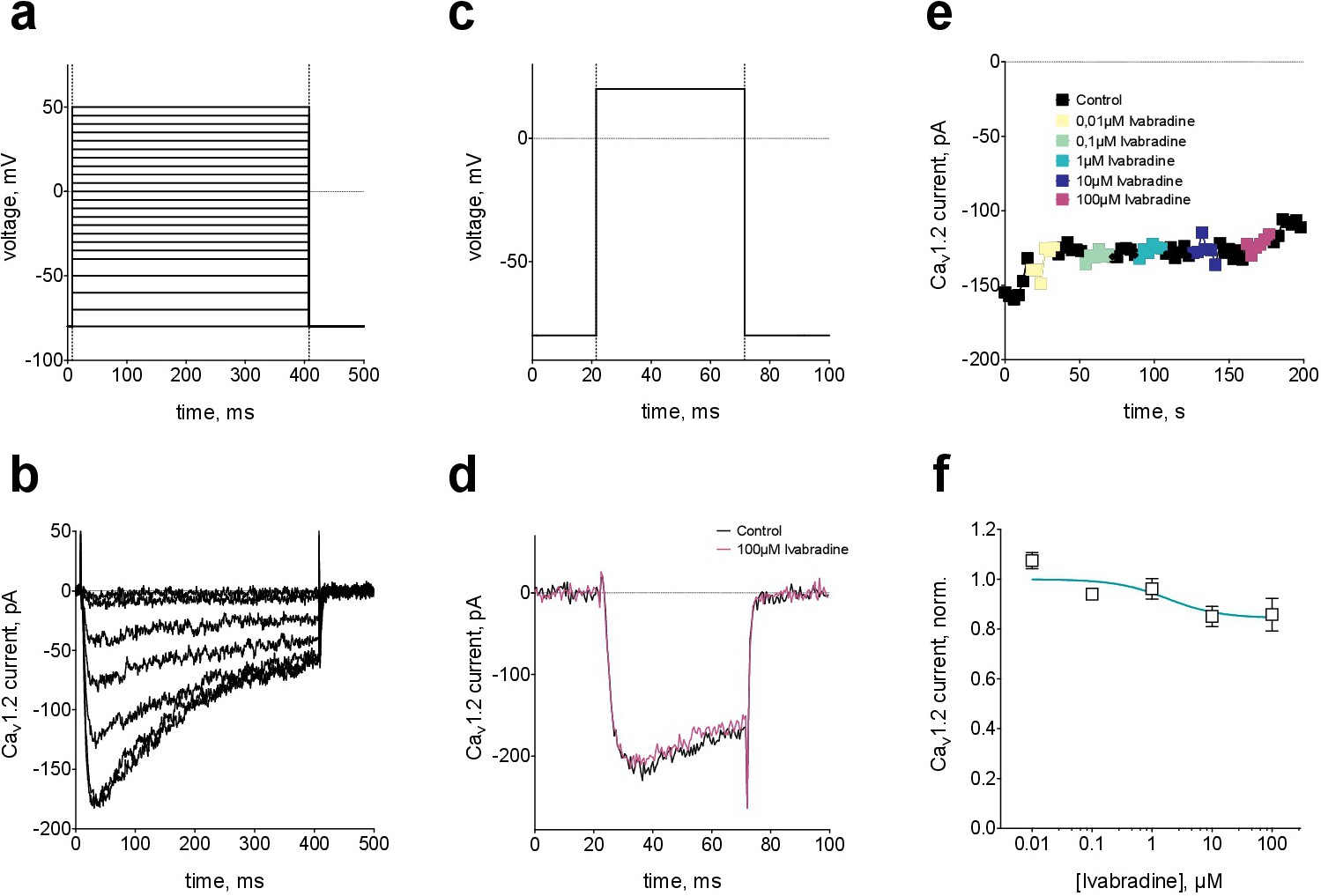Fig. 3. Effect of ivabradine on heterologously expressed human Cav1.2 channels. (a) Voltage-clamp protocol to derive current voltage relationships. (b) Typical inward currents through recombinant Cav1.2 channels expressed in tsA-201 cells as elicited by the voltage-clamp protocol shown in (a) for selected voltage steps (-25, -15, -5, 0, 5, 10, and 15 mV). Barium was used as charge carrier (see Methods). (c) Voltage clamp protocol to elicit maximal calcium current amplitude was applied every 3 s. (d) Typical calcium current for the voltage-clamp protocol shown in (c) under control conditions and in the presence of 100 ÁM of ivabradine. (e) Maximal Cav1.2 current amplitude as elicited by the voltage-step to +20 mV (c, d) under control conditions and in the presence of ascending concentrations of ivabradine. (f) Summary of normalized steady-state Cav1.2 current amplitudes (mean +- SEM, n = 13-15) for all ivabradine concentrations tested. A Non-linear fit with a Hill equation (line) was statistically not significant using and extra sum of square F-test.
